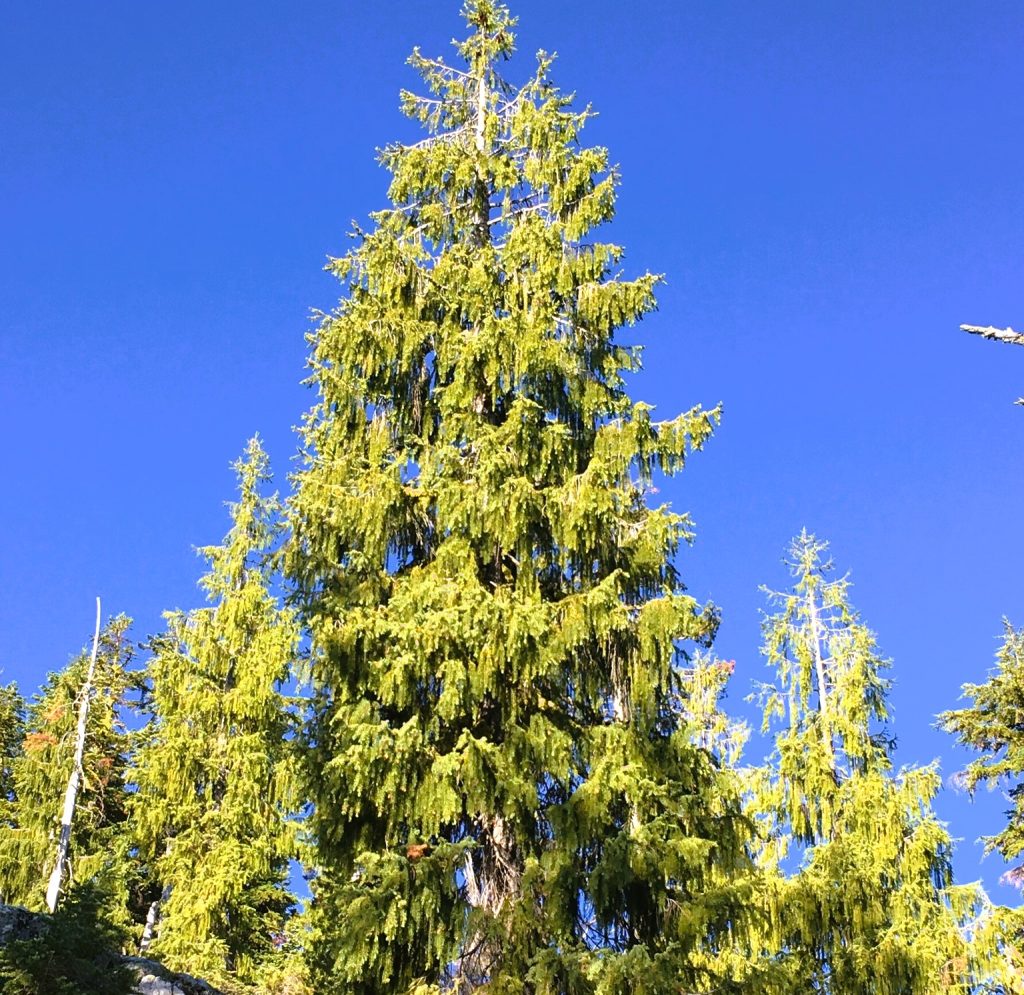Brewer Spruce (Picea breweriana): A Comprehensive Guide to Cultivation, Longevity, and Preservation

Introduction: Dive into the world of Brewer Spruce (Picea breweriana), an awe-inspiring conifer native to the Klamath Mountains. Beyond its picturesque appearance, explore crucial insights into its cultivation, potential longevity, and the measures required for its care and preservation.
Snapshot of Brewer Spruce:
- Common Name: Brewer Spruce.
- Distribution: Exclusive to the Klamath Mountains in Oregon and California.
- Habitat: Flourishes at elevations of 1000-2700 meters.
Distribution and Habitat: Brewer Spruce stands proudly in the Klamath Mountains, gracing the landscapes of southwestern Oregon and northwestern California. Found at elevations from 1000 to 2700 meters, it thrives in the unique ecosystems of these mountainous regions.
Majestic Description:
- Height: Towering at 20-40 meters, with exceptional specimens reaching up to 50 meters.
- Trunk Diameter: Robust trunk with a diameter of 1.5 meters.
- Crown Characteristics: Distinctive crown with vertically hanging branches, forming a cascading curtain of foliage. Prominent in trees taller than 2 meters.
- Bark: Thin and purple-brown, adding an elegant touch to the tree's exterior.
Needle-like Foliage and Cones:
- Needle Characteristics: Needle-like leaves, 15-35 mm in length, in a rich dark green hue.
- Cones: Larger than most species, cylindrical cones measure 8-15 cm in length and 3-4 cm in width. Dark purple initially, transitioning to red-brown upon maturity.
- Seeds: Small black seeds, measuring 3-4 mm in length.
Cultivation Insights:
- Optimal Altitude: Flourishes in mountainous regions at elevations of 1000-2700 meters.
- Unique Foliage Display: Distinctive curtain of foliage becomes prominent in trees exceeding 2 meters in height.
Disease Resistance and Care:
- Disease Resilience: Brewer Spruce generally displays resilience to diseases. Regular monitoring is crucial to detect signs early.
- Pest Management: Vigilant inspection for pests ensures the tree's health.
- Soil Drainage: Excellent drainage is essential to prevent root diseases.
- Watering:* Maintain moderate watering levels, avoiding waterlogging.
Potential Longevity:
- Brewer Spruce holds the potential for a long and healthy life, with certain specimens showcasing longevity.
Frequently Asked Questions:
- Q: How can I ensure optimal health for Brewer Spruce?
- A: Prioritize well-drained soil, regular inspections for pests, and moderate watering to maintain its health.
- Q: What is the potential lifespan of Brewer Spruce?
- A: Brewer Spruce has the potential for a long life, with certain specimens showcasing impressive longevity.
- Q: Are there specific signs of diseases I should watch for?
- A: Look out for discoloration, unusual growth patterns, or visible signs of pests during regular inspections.
- Q: Does Brewer Spruce require special fertilization?
- A: Generally, Brewer Spruce adapts well to nutrient-poor soils, requiring minimal fertilization.
Conclusion: As we unravel the intricacies of Brewer Spruce, let's commit to its care and preservation. This comprehensive guide ensures a deeper understanding of this majestic conifer, fostering its well-being for generations to come in the enchanting Klamath Mountains.

Leave a Reply
You must be logged in to post a comment.